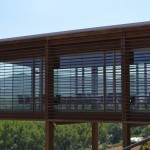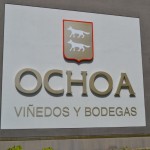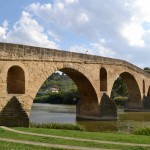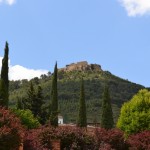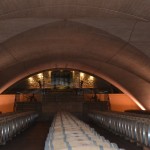With summer in full swing, we hope you are taking advantage of the great weather and having fun!
While there are many fun activities taking place on the East End this season, consider attending the James Beard Foundation’s annual Chefs and Champagne. This star-studded event raises money for the foundation’s scholarships and will honor Emeril Lagasse. Featuring food from top toques (the chefs) and Nicolas Feuillatte Champagne, this gala celebration takes place at Wölffer Estate on Saturday, July 23, 2011. For more information, see the James Beard website.
Also, mark your calendar for the second annual HARVEST: Wine Auction and Celebration of Long Island’s East End, which will take place on September 17, 2011. Leading up to the big event, wine salons will be offered on September 3, 10 and 17, with Grand Cru Classes presenting a special Mad about Merlot session on September 10 at 11:00 AM.
Do chocolate and wine pair well together? Some say yes, some say no way! Settle the debate with our wine and chocolate tasting event on August 14. Roxanne Browning of Exotic Chocolate Tasting will share the world of artisanal chocolate from bean to bar, while Tracy will focus on the world of wine, with a delicious line-up of wines carefully selected to pair with Roxanne’s chocolates. Visit our website to sign up for this and all other classes.
Finally, we are also pleased to announce the Grand Cru Classes was featured in the first edition of CRAVE New York City – The Urban Girl’s Manifesto, which profiles local, women-owned businesses.
Drink wisely and well,
Tracy Ellen Kamens, Ed.D., DWS, CWE
CEO: Chief Education Officer
and
Jared Michael Skolnick
COO: Cork Opening Officer
Navarra: Ancient Kingdom of Modern Wines
Our mother made the pimentos, she tells us. Seemingly in the middle of nowhere, we sit outside under the shade of an arbor on a sun-filled summer’s day. An enormous feast is suddenly set before us – salad, sausages, tortillas, jamon, pimentos, cheese, while bottles of wine, tasted earlier at the Ochoa winery, stand at attention, ready to poured. We are joined by Adrianna, Beatriz and Pablo and are treated like dear old friends of the family.
A few days later, a modern box suspended high above the vineyards serves as the site for lunch. Javier points out the Otazu winery and other buildings on the estate from this vantage point. Juxtaposed, the two scenes seem unlinked, but, in fact, they are indicative of Navarra’s dichotomy of old and new co-existing throughout the region.
Two wolves adorn the Ochoa crest, the Basque word for which is ochoa. The family can trace its winemaking roots to a document dated 1370 in which Queen Juana (Carlos II’s wife) orders payment to wine merchant, Ochoa de Ayanz. Several towns away, in Ujué, a mural in a Romanesque church features a similar crest, almost as further evidence of the Ochoa heritage. Stretching back farther to the Romans, Navarra has been at the crossroads of many cultures for centuries. At Villa Romana de Arellano, the dolias unearthed by a farmer show that wine was an important product from the very beginning.
More currently, Ochoa has played a pivotal role in Navarra’s wine industry with Javier Ochoa’s role in establishing EVENA (Navarra Viticulture and Oenology Station). Continuing the family’s winemaking legacy, daughter Adriana recently took over as head winemaker and sister, Beatriz, handles marketing and sales. Reflective of Navarra’s international outlook, Adriana studied viticulture and enology in Bordeaux, France and worked the harvest in Australia before taking the reins from dad.
This duality of tradition and modernity can be seen over and over again in different forms. When we arrive, the town of Puente la Reina is bustling with activity – people sit outside in cafes and bars enjoying tapas and other treats in the summer’s afternoon. A veritable tower of Babel, a mix of languages and accents are heard as we catch snippets of conversations when we pass by. The year is 2011, but we would have found a nearly identical scene had it been 1211. Situated along the Camino de Santiago, Puente la Reina, in the heart of Navarra, is just one of the many towns that were built to provide the pilgrims with food and shelter as they made their way to Santiago de Campostela, bringing their customs and cultures as they passed through.
Further down the road, the well-worn and well-signed path snakes its way past a medieval castle at Castillo Monjardin. The castle and its eponymous winery are presided over by Sonia and her husband, Victor. While not part of Spain’s monarchy, there is a royal air about the place, which recalls Navarra’s history as a separate kingdom (maintaining its independence until it succumbed to the Castilian empire in 1512). Planted to Chardonnay, Tempranillo, Cabernet Sauvignon and Merlot, their vineyards underscore Navarra’s link to France. In fact, the Compte de Champagne, Theobald, also held the title of King of Navarra.
Similarly, at Otazu, Javier leads us through the ancient cellars, stopping to point out an alter that dates to the 14th century. After walking the long corridor, we turn to our right and are confronted by a set of glass doors that serve as the entrance to the new barrel room. Though just steps away, we are suddenly transported seven centuries to what is best described as a modern temple truly dedicated to Bacchus, with 1,000+ French oak barrels resting under the vaulted ceiling.
Nearby, St. Martin de Unx’s winemaker proudly professes the winery’s commitment to Spanish varieties: Garnacha, Tempranillo and Viura. While the co-op sticks to traditional grapes, it is experimenting with Navarran oak, grown in local forests, and, as he is quick to point out, are the only ones to be conducting such trials, another point of pride. Testing is also alive and well at Inurrieta, which planted Sauvignon Blanc before it became an authorized grape for the DO. Now, its two Sauvignon Blancs garner critical acclaim.
Produced from both native and international grape varieties, Navarra’s wines speak to the history and tradition of the region, while making room for what is to come. However, what is most striking about these wines is their quality. In tasting one after another, there was concentration, complexity and beautiful balance. Even more amazing, when inquiring about retail prices, most wines fall under $20.00, with quite a few under $15.00.
With its long tenure of winemaking, international influences and openness to trying new things, Navarra’s wineries remain true to this heritage. What the future holds for Navarra is anyone’s guess, but it is sure to be focused on innovation, while being strongly anchored in the region’s culturally diverse past.
Tasting Notes
Inurrieta Orchidea Sauvignon Blanc 2010, Navarra, Spain, $10.00
While Sauvignon Blanc is newly authorized for the region, Inurrieta produces two, with the Orchidea its unwooded venture with this grape. Aromas of citrus and tropical fruit give way to high acidity, citrus, especially grapefruit, with a slight floral note. The sur lie treatment adds some roundness to the palate, which culminates in medium+ length.
Castillo de Monjardin Chardonnay Reserva 2007, Navarra, Spain, $19.00
Castillo de Monjardin is the only one producing a Reserva-level Chardonnay. Having been barrel fermented and aged in French oak, this wine provides notes of apple, spice, butterscotch and vanilla on the nose. Its palate is full-bodied with apple, lime, spice and slight oak flavors. Overall, this wine is complex, bright and creamy, with long length.
Ochoa Rosado Lágrima 2010, Navarra, Spain, $11.00
Navarra is well-known for its rosés (aka rosados) and with good reason. The more “serious” of Ochoa’s rosés, the Lágrima is comprised of 50% each of Garnacha and Cabernet Sauvignon, with deep pink hue. Floral and berry aromas persist on the palate, along with depth and structure due to the wine’s slight tannic grip, herbal character and long length.
Senorio de Unx Reserva 2004, Navarra, Spain, $20.00
Produced from 90% Tempranillo and 10% Garnarcha, the Reserva spent 15 months in a combination of French and American oak. The nose offers dried herbs, floral, spice and raisin, while the palate emphasizes dried figs, red fruit and sweet spice. With its medium+ tannins, full body and long length, this wine could continue to age and develop with time.
Otazu Pago de Otazu 2006, Navarra, Spain, $32.00
The Pago designation, which supersedes the DOCa level, was added to Spain’s wine laws in 2006 and is only awarded to very best estates (to date, there are only 10 Vinos de Pago throughout all of Spain). A blend of 90% Cabernet Sauvignon and 10% Tempranillo, this wine displays wet earth, dried herbs, red fruit and cinnamon on the nose. The full-bodied palate has medium+ acidity, medium tannins with notes of red fruit and earth, which linger in the long length.


